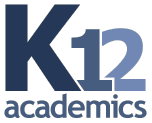- Education Topics
- Achievement Gap
- Alternative Education
- American Education Awards
- Assessment & Evaluation
- Education during COVID-19
- Education Economics
- Education Environment
- Education in the United States during COVID-19
- Education Issues
- Education Policy
- Education Psychology
- Education Scandals and Controversies
- Education Reform
- Education Theory
- Education Worldwide
- Educational Leadership
- Educational Philosophy
- Educational Research
- Educational Technology
- Federal Education Legislation
- Higher Education Worldwide
- Homeless Education
- Homeschooling in the United States
- Migrant Education
- Neglected/Deliquent Students
- Pedagogy
- Sociology of Education
- Special Needs
- National Directories
- After School Programs
- Alternative Schools
- The Arts
- At-Risk Students
- Camps
- Camp Services
- Colleges & Universities
- Counties
- Driving Schools
- Educational Businesses
- Financial Aid
- Higher Education
- International Programs
- Jewish Community Centers
- K-12 Schools
- Language Studies
- Libraries
- Organizations
- Preschools
- Professional Development
- Prom Services
- School Assemblies
- School Districts
- School Field Trips
- School Health
- School Supplies
- School Travel
- School Vendors
- Schools Worldwide
- Special Education
- Special Needs
- Study Abroad
- Teaching Abroad
- Volunteer Programs
- Youth Sports
- For Schools
- Academic Standards
- Assembly Programs
- Blue Ribbon Schools Program
- Educational Accreditation
- Educational Television Channels
- Education in the United States
- History of Education in the United States
- Reading Education in the U.S.
- School Grades
- School Meal Programs
- School Types
- School Uniforms
- Special Education in the United States
- Systems of Formal Education
- U.S. Education Legislation
- For Teachers
- Academic Dishonesty
- Childcare State Licensing Requirements
- Classroom Management
- Education Subjects
- Educational Practices
- Interdisciplinary Teaching
- Job and Interview Tips
- Lesson Plans | Grades
- Professional Development
- State Curriculum Standards
- Substitute Teaching
- Teacher Salary
- Teacher Training Programs
- Teaching Methods
- Training and Certification
- For Students
- Academic Competitions
- Admissions Testing
- At-Risk Students
- Career Planning
- College Admissions
- Drivers License
- Educational Programs
- Educational Television
- High School Dropouts
- Higher Education
- School Health
- Senior Proms
- Sex Education
- Standardized Testing
- Student Financial Aid
- Student Television Stations
- Summer Learning Loss
Children's Literacy Center

Basic Information
Address: 2928 Straus Lane, Suite 100
Colorado Springs, CO 80907
Phone Number: 719-471-8672
Fax Number: 719-473-0439
Director: Gina Solazzi
Additional Information
Causes Served: Reading, Literacy, Tutoring
Background Check: Yes
Population Served: Children in the 1st through 6th grade reading levels
Ages for Volunteer: 14 +
Hours of Service: Various
Minimum Hours Required: 24 hours per semester or 12 weeks
Days of Service: Monday, Tuesday, Wednesday, Thursday, and Saturday
Mission Statement:
The Children's Literacy Center builds a life of success for children through a foundation of literacy.
Program History:
The Children's Literacy Center offers FREE one-to-one tutoring for children reading below grade level at no cost to families. We recruit and provide training to hundreds of volunteers each year. The Children's Literacy Center, a 501(c)(3) not for profit, began as a Junior League project in 1991. It has since evolved into a statewide effort that receives support from a broad base of individual donors, businesses, corporations, schools and foundations. Beginning with one location and sixty-two children in 1993, there are nearly 25 active sites statewide, serving hundreds of students annually.
Additional Information:
Why do we need to help?
Approximately forty percent of fourth grade students in Colorado fail to meet state reading standards and more than fifty percent do not meet state writing standards. This translates to thousands of children at-risk of not succeeding in school. The Children’s Literacy Center’s program works with the community, schools and families, providing a cost-effective literacy program that minimizes the gap between success and failure.
Who are the tutors?
Tutors are community volunteers from age 14 and older, who have a desire to help children struggling with reading. Volunteer tutors work individually with each child, teaching them to unlock the meaning of words and giving them the assistance to develop independent reading strategies. In addition, volunteers forge supportive relationships with the children, creating a sense of self-worth and building lasting connections within the community.
Tutors are community volunteers from age 14 and older, who have a desire to help children struggling with reading. Volunteer tutors work individually with each child, teaching them to unlock the meaning of words and giving them the assistance to develop independent reading strategies. In addition, volunteers forge supportive relationships with the children, creating a sense of self-worth and building lasting connections within the community.
What curriculum is used?
The Children's Literacy Center's Peak Reader® program addresses today's important educational issues - student achievement, school accountability and the meeting of state standards and National Literacy Strategies.
The Children's Literacy Center's Peak Reader® program addresses today's important educational issues - student achievement, school accountability and the meeting of state standards and National Literacy Strategies.
What is our impact in the community?
Currently there are 8,000 students in El Paso County not reading at grade level. In the next ten years, 97% of all jobs will require a high school education or more. Our program results in a 95% success rate;consequently, program participants develop a solid reading foundation essential to them now and in the future. Tutors give each child the confidence they need to succeed. The ability to read and learn guarantees economic security and social stability in our neighborhoods and communities.


